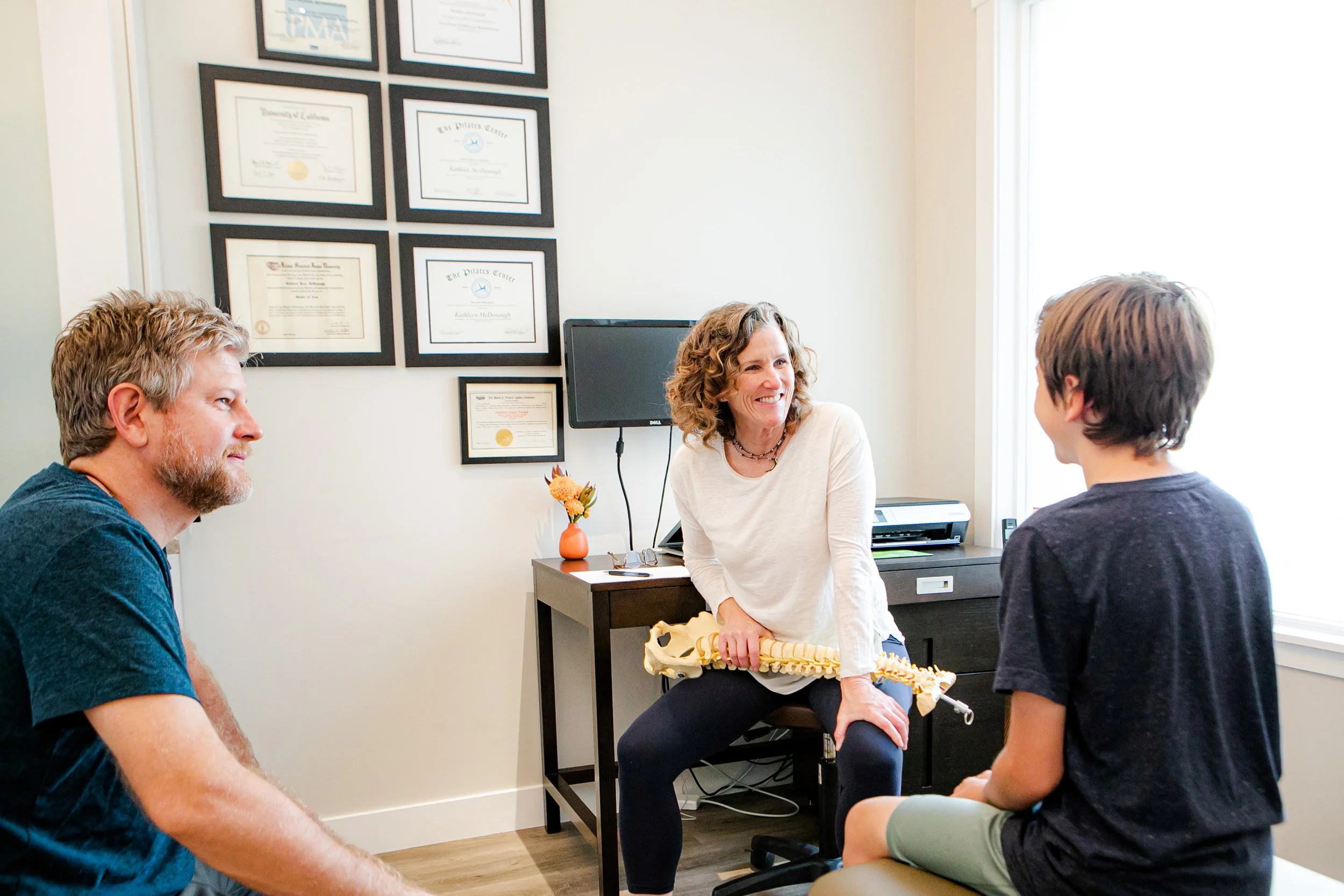Backpack Back Pain in Kids: Simple Tips to Keep Your Child's Spine Safe
As the school year begins, excitement fills the air—new classes, friends, and opportunities. But along with these positives comes a potential downside: back pain caused by heavy backpacks. We've all seen it: kids walking to school or the bus stop, their backpacks bulging with books and supplies, often as large as half their size! As a physical therapist, it breaks my heart to see children carrying oversized or overweight packs that could be setting them up for discomfort now and health problems later. Back to school doesn't have to mean backpack back pain in kids.
Why Should You Worry About Your Child Having Backpack Back Pain?
You might be wondering, "Is my child's backpack really a big deal?" The answer is yes. Backpacks may seem like a simple way to carry school supplies, but when overloaded or worn improperly, they can become a significant source of strain and fatigue on a child's developing body.
A child carrying a heavy backpack alters their posture, walking speed, and step length. These changes may not seem severe initially, but these issues can worsen as students walk longer distances and become fatigued. Over time, these shifts in posture and movement can lead to chronic problems, including neck pain, back pain, and other musculoskeletal issues. Research has shown that even seemingly minor alterations in posture can set the stage for discomfort and pain that could persist into adulthood.
What are the Safe Weight Limits for Kids' Backpacks?
Understanding how much weight your child can safely carry is crucial. A general rule of thumb is that a backpack should weigh at most 10% to 15% of a child's body weight. For instance, a child who weighs 60 pounds should carry at most 6 to 9 pounds in their backpack. However, recent studies suggest that even these percentages might be too high.
Posture and Performance
Research indicates that when a backpack weighs around 10% of a student’s body weight, it can already start to impact posture. The child might lean forward to balance the extra weight, leading to poor alignment and increased strain on the spine and muscles. Over time, these changes can contribute to chronic issues such as back and neck pain. (BioMed Central) (BMJ Archives).
Recommended Limit
While the 10% guideline has been a widely accepted starting point, it's important to recognize that even this amount can be problematic. Studies have shown that more than half of students regularly carry backpacks that exceed these recommendations, which significantly raises their risk of developing back-related health issues. LVHN) (BMJ Archives)
The effects of carrying too much weight aren't just physical; they can also impact a child's ability to concentrate and perform well in school. When children are uncomfortable or in pain, it's harder for them to focus on their studies and enjoy their school day.
What If Your Child Doesn't Tell You They're Experiencing Back Pain?
It's not uncommon for children to avoid telling their parents about discomfort or pain, either because they don't want to worry them, or they may not realize the seriousness of the issue. As a parent, it's important to look for signs indicating your child struggles with back pain. These signs can include:
Changes in Posture: Watch for any noticeable changes in how your child stands or walks. If they seem to be leaning forward or complaining about their backpack feeling heavy, it is likely that the weight is too much.
Avoiding Activities: If your child suddenly becomes less active or avoids activities they usually enjoy, it could be due to discomfort or pain.
Frequent Complaints: Pay attention if your child frequently mentions that their back or shoulders feel sore, even if they do not directly say they are in pain.
Fidgeting or Adjusting the Backpack: If your child constantly adjusts their backpack or appears uncomfortable while wearing it, this could indicate that the backpack is too heavy or improperly fitted.
If you notice any of these signs, promptly addressing the issue is essential. Regularly check your child's backpack weight and how it fits and encourage open communication about any discomfort they might be experiencing. Early intervention can help prevent long-term issues.
Why Not Just Use a Rolling Backpack?
You might think the simple solution is a rolling backpack, but as many parents know, this suggestion is often met with resistance—rolling backpacks aren't exactly "cool." Plus, it can be difficult for them to navigate through crowded hallways or up and down stairs. Instead, focusing on smarter backpack use can be a more practical approach.
Practical Tips to Prevent Backpack Back Pain
Here are some straightforward tips to help reduce the risk of back pain from backpacks:
1. Plan Ahead
Encourage your child to clean out their backpack regularly. Removing unnecessary items like old papers, extra books, or supplies not needed for homework can significantly lighten the load. Make it a routine to check the backpack once a week, ensuring your child only carries the essentials.
2. Use Lockers
If your child's school provides lockers, encourage them to use them daily. Dropping off and picking up materials as needed helps avoid carrying everything all day. This practice lightens the load and teaches your child to stay organized and plan ahead.
3. Pack Strategically
Teach your child to pack their backpack with the heaviest items, like textbooks or laptops, closest to their back. Suggest they place lighter items further away from the body.. This strategic packing helps maintain better posture and balance, reducing strain on the spine and muscles.
4. Wear It Properly
Ensure your child uses both shoulder straps to distribute the weight evenly. Wearing the backpack on one shoulder can cause an imbalance, leading to muscle strain and pain. If the backpack has chest and hip straps, encourage your child to use them for additional support. Adjust the shoulder straps so the pack sits snugly against the lower back, not hanging too low.
5. Choose the Right Backpack
The ideal backpack should have wide, padded shoulder straps, a chest strap, and a hip belt to help distribute weight more evenly. It should fit snugly and not be wider than your child's torso. While trendy designs may appeal to kids, prioritize function and fit over fashion to protect your child's back.
When to Seek Help for Backpack Back Pain in Kids
If, despite taking these precautions, your child experiences back pain, it’s essential to seek professional help. Early intervention can prevent minor discomfort from becoming a chronic issue. As a physical therapist, I specialize in helping kids develop healthy habits and addressing any pain they may be experiencing. Don’t hesitate to reach out—I’m here to help your child stay pain-free and enjoy their school year to the fullest.
Contact Kathleen McDonough Physical Therapy today to schedule an appointment. Let’s work together to ensure your child has a healthy, pain-free school year.




